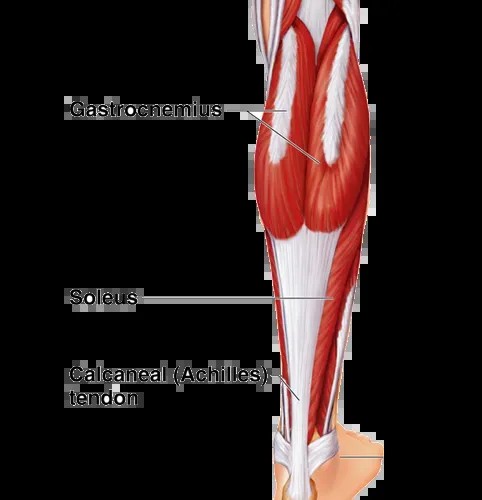Tight calves can be a common nuisance, impacting daily activities and overall comfort. This article explores the potential causes of tight calves, effective self-care strategies, and when to seek professional help.
 Calf Muscle Anatomy
Calf Muscle Anatomy
The calf muscle, comprised of the gastrocnemius (with its medial and lateral heads) and the underlying soleus muscle, plays a crucial role in lower leg function. These muscles work together as a pump, facilitating blood circulation from the lower extremities back to the heart. This “calf pump” is essential for cardiovascular health. A strong, healthy calf muscle supports efficient blood flow throughout the body.
What Causes Tight Calves?
Several factors contribute to calf tightness:
- Overuse: Sudden increases in activity or changes in exercise routines can strain the calf muscles, leading to tightness.
- Underuse: Prolonged inactivity weakens calf muscles, making them prone to tightness. This is particularly prevalent in older adults.
- Muscle Atrophy: Similar to underuse, muscle wasting due to age or lack of activity contributes to calf tightness.
- Muscle Tears: While acutely painful, muscle tears also cause tightness as part of the healing process.
- Nerve Tension (Sciatica): Nerve pain radiating down the back of the leg, often referred to as sciatica, can cause calf tightness. “Sciatica” is often misused to describe any leg pain originating in the back; true Sciatica refers to pain along the sciatic nerve path.
- Footwear: Changes in footwear, particularly switching to high heels or sandals, alter the mechanics of the lower leg and can lead to tight calves.
Self-Care for Tight Calves
Fortunately, addressing tight calves often doesn’t require professional intervention. Identifying the root cause – overuse, underuse, footwear – is the first step. Adjusting activity levels and incorporating gentle stretching and strengthening exercises can significantly alleviate tightness.
Remember, strong and flexible calves contribute to overall body function. For example, tight calves increase the force transmitted through the knees with each step, potentially leading to wear and tear over time. Additionally, tight calves can impact other areas of the body. The interconnectedness of muscle groups means tightness in the calves can contribute to problems in the Achilles tendon, feet, hamstrings, and even the lower back.
Stretching and Strengthening
Gentle stretching helps lengthen calf muscle fibers without causing further injury. Hold stretches until you feel a pull, but avoid pain. Bending the back knee during a calf stretch targets the soleus muscle. Calf raises are a simple yet effective way to strengthen calf muscles.
Always stretch after strengthening exercises. A stretched, strong muscle is more efficient and less prone to injury.
When to Seek Professional Help
If self-care measures don’t provide relief, consider consulting a healthcare professional. Treatment may involve:
- Soft Tissue Massage: Releases muscle and tendon tension, improving flexibility and reducing pain.
- Chronic Calf/Achilles Issues: Long-standing tightness may require more extensive treatment and rehabilitation.
- Acute Injuries (Strains/Tears): Follow the RICE protocol – Rest, Ice, Compression, Elevation – for acute injuries and seek professional guidance.
- Kinesiology Tape: Provides support and pain relief, facilitating movement and preventing compensatory injuries in other body parts.
Persistent calf tightness can indicate underlying issues. Consult a healthcare professional if your symptoms persist or worsen. They can provide a proper diagnosis and develop a tailored treatment plan. Remember, prioritizing calf health contributes to overall well-being and prevents potential complications.
